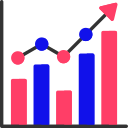Future and Options Trading
Boost Your Future And Options Trading With SpeedBot Algo Trading.
Best-In-Class Future and Options Trading App
SpeedBot has become a significant player in the future and options trading industry, attracting
countless users worldwide. The platform stands out from its competitors by not charging any commission for
its trading, including options trading, so users can use it without worrying about additional costs.
SpeedBot's mobile application is comprehensive and allows for a wide range of features, such as placing options trades, following your investments' performance over time, simulating trades with a practice account, and much more. Moreover, its mobile app offers several exclusive features not found with other brokers.
Get It On Your Mobile
Future & Options Trading with SpeedBot
Profound ITM / OTM Options
Purchase options strike deep in or out of the money (OTM / ITM)
directly from the options chain.
Direct Trading Mode From Future & Option Chain
Quicker order placements without human
involvement.
Addition Stock Pledging Options
Offer stock to receive more significant profit margins.
Single-click Reverse Positioning
Effortlessly reverse transactions with a single click and no brokerage charges.
Let Us Begin with Some of the Simple Steps
Create Your Options Account
Signing up for an account with SpeedBot is fast and free with extended data security.
Single Tap Stock Selling and Purchasing
SpeedBot offers trade futures and options with ease - just one click to get started!
Simple Position Tracking Facility
Stay current on your investments with an easy-to-use dashboard that lets you quickly view your positions and track your profits and losses.
Start Algo Trading with SpeedBot
Your Exploration into Derivatives Trading Begins Here!
Learn the fundamentals, explore the strategies, and gain the knowledge and confidence you
need to become a successful trader. It is your opportunity to gain financial freedom through
Derivatives trading. Join us to gain access to their courses, blogs, dictionaries, and more to
become a professional Derivatives trader.
SpeedBot offers a wide range and competitive F&O trading plans with a detailed dashboard and simple clicks. You can check your plans with a comprehensive breakdown of the charges.
Latest Blogs
FAQs Related to Future & Options Trading
Derivatives are financial instruments that derive value from an underlying asset, group of assets, or benchmark. They are contracts between two or more parties that can be traded on an
exchange or over the counter (OTC) and used to trade any number of assets. Prices for derivatives are based on fluctuations in the underlying asset, and they can be used to access specific markets, hedge against risk, or speculate with the expectation of commensurate reward. Derivatives allow risk-averse investors to transfer risk and rewards to risk-seeking investors.
Futures are financial derivative contracts that compel the two parties involved to buy or sell an asset at a predetermined price at a set time in the future. The buyer is obligated to purchase, or the seller is obligated to sell, the asset at the expiration date regardless of the market price. These contracts can involve physical goods or financial instruments and are standardized to allow for trading on a futures exchange. Futures can be used to protect against potential losses or to make bets on price fluctuations.
What are Futures and Options?
Futures and Options (F&O) are derivatives that derive value from an underlying asset such as shares or commodities. In an F&O transaction, two parties agree to buy or sell the asset at a predetermined price on a fixed date. Futures contracts require the two parties to fulfill the agreement, whereas Options contracts give the investor the right, but not the obligation, to buy or sell the asset at a specific price on a certain expiry date. However, an Options contract can be exercised anytime before it expires.
You are in control when you own naked options, but you don't own the underlying asset. This means that you can't exercise the option without the asset, but you can still benefit from the option by collecting a premium. An alternative to selling naked options is to sell covered options, which is more common when selling covered calls rather than covered puts. Selling covered calls can allow you to earn more if you hold the underlying security. However, selling naked puts may have lower initial costs, but you won't get the added dividend income you would get with a covered call. Both techniques offer distinct advantages and help you build a risk profile that works well in market conditions.
No minimum amount of money is required to begin trading or investing in the stock market in India. You can start with any amount, as hundreds of stocks are available with prices even lower than Rs 10. However, commissions will likely be your highest cost as an active trader. Other expenses such as software, Internet, and training can be expensive but smaller than commissions. Although there is no rule for how much money you should have in your account to start trading, some brokerages may set this amount for you. The amount of money required to start day trading will depend on the type of securities you want to purchase.
Both options and futures contracts are financial instruments that are exchanged on stock exchanges like the BSE, NYSE, NSE, or NASDAQ. While futures contracts require the underlying asset to be traded on the date specified in the contract, options can be exercised at any time before expiration.Both options and futures have a daily settlement, and a margin account with a broker is necessary to participate in trading them. These financial instruments can be used to mitigate risk or to speculate, and they can be based on stocks, bonds, currencies, or commodities.
Options are securities that grant the holder the privilege to buy or sell an underlying asset at a pre-determined price on a pre-determined date, although they are not obligated to do so. The set price is the strike price (or exercise price). Call options are the cost at which the holder can purchase the asset; for put options, this is the price at which the security can be sold. The value of an option is based on the gap between the strike price and the current market price of the underlying asset, known as its "moneyness."





